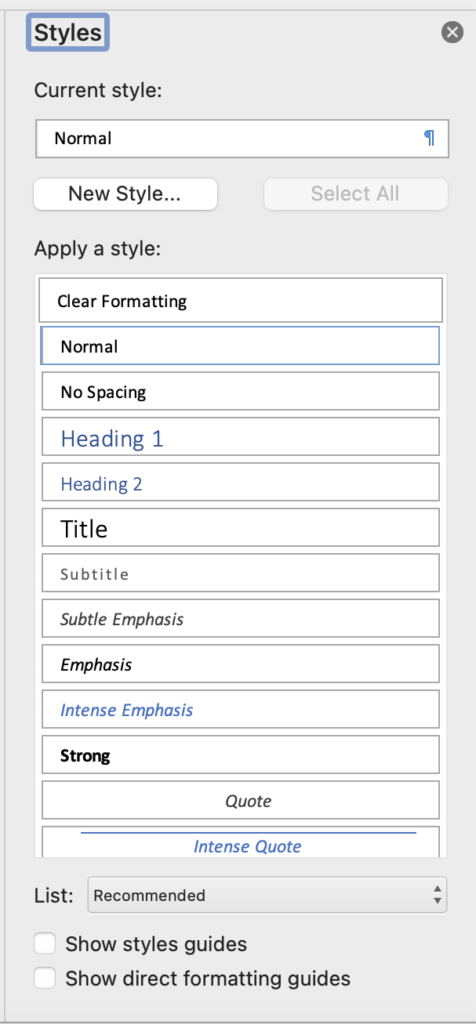Last updated: February 24, 2023.
This article covers:
- What is alternate format text (AFT)?
- Who should use AFTs?
- What are the different types of AFTs?
- How do I request an AFT?
- Faculty tips and support.
- Copyright issues.
What is Alternate Format Text (AFT)?
Alternate format text (AFT) refers to written materials that are presented in a format other than traditional print text. These formats can include Braille, audio, large print, and electronic text. The goal of AFTs provide equitable access to written and highly visual information to individuals with disabilities, such as visual impairments or learning disabilities.
Who Should Use AFTs?
In the context of Universal Design AFTs should be made available to anyone who would benefit from them.
Did you know? Universal Design is an intersection of usability, accessibility, and inclusivity! Ensuring information can be accessed, understood, and used to the greatest extent possible by all people, with differing abilities.
Individuals who may benefit from AFTs:
- Individuals with a learning disability
- Individuals with a physical disability making it difficult to hold printed materials
- Individuals who are blind or have low vision
- Individuals who prefer to learn using different formats
- Individuals who speak a different language
What are the Different Types of AFTs?
Audio – MP3
Written documents can be converted into accessible audio documents as an mp3 file.
Quick Facts:
- Audio description and accessible audio documents are different
- Can be played on a computer, mp3 player, smart phones, etc.
- Computer generated realistic synthetic speech
- Verbatim (or as close to verbatim) to original document
Did you know? Audio description is different than accessible audio documents! Audio description provides a description of visual object or video. This might be used to describe visual activity in a movie or for museum exhibitions.
Braille
Tactile writing system which uses patterns of raised dots that readers feel with their finger tips.
Quick Facts:
- Braille and tactile graphics are different
- Conveys complex math and science equations
- Conveys spelling and grammar structures
- Generated manually or with specialized software and Braille embossing
- Most languages have their own Braille code
Electronic documents
Electronic text format of printed text that can be read by screen readers. Typical outputs are PDF, Word, or HTML with styles, headings, and graphic description embedded into the production of the document.
Quick Facts:
- Headings, styles, and alt text for graphics increase accessibility
- PDFs that are born digital are not the same as PDFs of scanned printed documents
- Styles pane in Word allows anyone to create highly accessible electronic documents

Large print
Reformatted print documents, enlarged so text is at lease 18 point and increased spacing.
Quick Facts:
- Common text used for large print are Verdana, Helvetica, Tahoma, or Arial
- Regular print is typically 10 or 12 point
- Tables in large print format are often converted into list format
PDF scans with recognized text
PDFs of scanned printed material that are converted into documents of with recognized text, and semantically tagged using specialized software so the PDFs can be read by screen readers.
Quick Facts:
- Accessible PDFs require a person, not technology, to remediate scans
- Quality of the scan directly translate to quality the accessible document
- Recognized text must be tagged with headings, image description, lists, tables, etc. or they are not accessible by screen readers
- Scans that are not converted into recognized text, tagged PDFs, are essentially image files
Did you know? Better quality and newer scanned documents result in more accessible PDFs!
Tactile graphics
Raised images intended to be felt not seen, used to convey non-textual information, specifically important for individuals who are blind or have a vision impairment.
Quick Facts:
- Best used for complex math or science equations, geography, process flowcharts, complex diagrams, or maps
- Combining tactile graphics with other AFTs such as accessible audio or Braille improves the learning experience
- Generated manually or with special printers
- Necessary in various learning environments such as the classroom or workplace
How Do I Request an AFT?
Students: Use the DSP Request for Accommodation form.
Faculty: Use the OTL Accessibility Support Request form.
Faculty Tips and Support
Hot Tip! UDOIT Cloud in Canvas assists in generating AFTs!
Generating AFTs is a highly time intensive and individualized process. Our cross campus accessibility partners are here to support you! To ensure all your course materials are accessible for all students here are a few tips:
- Utilize the OTL Canvas Accessibility Checklist.
- Don’t wait! Submit proactive AFT requests.
- Practice using the UDOIT Cloud accessibility checker.
- Reach out to our cross campus accessibility partners with questions to get support!
Copyright Issues
Cross campus accessibility partners do not retain copyright for course materials provided in AFT. Students are provided AFTs solely for educational purposes, ensuring equitable access to all course materials. Students may not duplicate or distribute AFT materials provided by any of the DU cross campus accessibility partners.
Related articles: